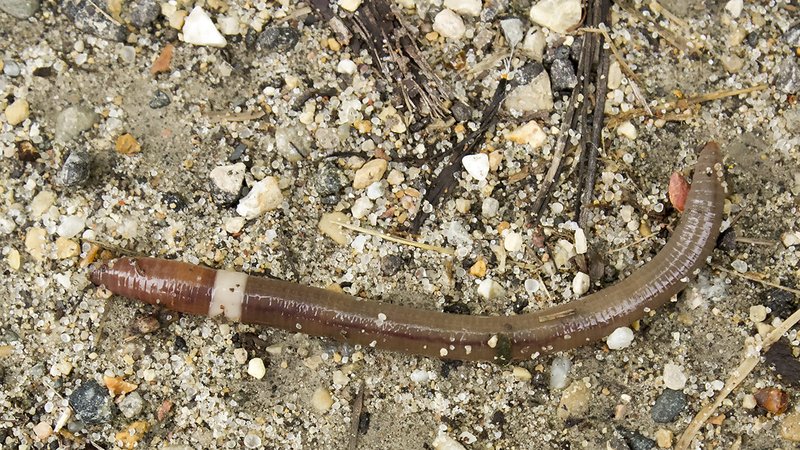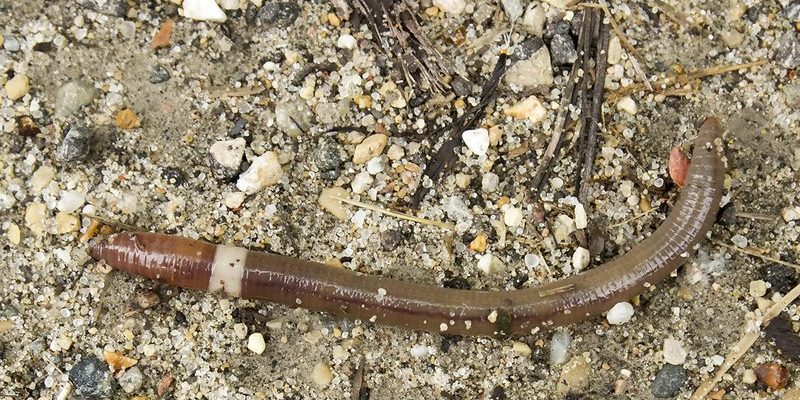
Understanding how earthworms “rest” can be a bit tricky because their bodies work differently than ours. While we humans rely on sleep for rejuvenation and memory consolidation, earthworms have their own unique rhythms. So, let’s dig into what scientifically keeps them ticking—or, in this case, wriggling!
What Are Earthworms, Anyway?
Earthworms are fascinating creatures often found wriggling in rich, moist soil. They play a crucial role in keeping our ecosystems healthy. Think of them as nature’s little recyclers. They consume organic matter like dead leaves and roots, breaking it down to enrich the soil.
They belong to a class called *Oligochaeta*, which essentially means “few bristles,” referring to the small hairs that help them move through the ground. Earthworms can be found in various environments depending on their species, from gardens to forests. And their bodies, which are long and segmented, make them particularly well-adapted for burrowing.
Most people are surprised to learn just how beneficial these critters are for soil health. By creating tunnels as they move, they help with **aeration** and water drainage, which is essential for plant growth. So, while they might seem like simple creatures, they’re doing a lot of hard work underground!
Do Earthworms Sleep or Rest?
You might be wondering, “So, what’s the deal with their sleep?” Here’s the thing: earthworms don’t sleep in the same way we do. They lack eyes and a brain like ours, which makes their sleep patterns quite different. Instead, they enter a state of rest that allows them to conserve energy and recover from their daily activities.
During this resting phase, earthworms tend to become less active, curling up in a ball or burying themselves deeper into the soil. This behavior might look a lot like sleep, but it’s more about being in a state of lowered activity and energy conservation. They don’t have eyelids to close, so this is how they signal to the world around them that they’re taking a break.
Interestingly, because they are in soil, earthworms can be active throughout the day and night. They don’t have a strict sleep cycle like humans with their REM sleep and deep sleep phases. Instead, their rest depends on environmental factors, such as moisture and temperature.
How Long Do Earthworms Rest?
The duration of rest for earthworms can vary quite a bit. It’s influenced by environmental conditions. For instance, when the soil is dry, earthworms tend to burrow deeper and rest more. On the flip side, they might be more active during wetter conditions.
While they might not set a timer for their rest, studies suggest that earthworms can enter these low-activity states for several hours at a time. In favorable conditions, they can alternate between periods of activity and rest throughout the day. It’s a bit like a flexible work schedule—there’s no 9 to 5, but they get the job done!
If you’re a gardener, knowing when earthworms are active can help you understand when to till the soil or add organic matter. Their resting habits play a vital role in maintaining soil health and fertility, making your plants happy and thriving!
Why is Understanding Earthworm Behavior Important?
Here’s why it matters: earthworms contribute significantly to soil health, which directly affects plant growth. Healthy soil means healthier plants, and this ultimately influences food production and environmental sustainability. By understanding earthworm behavior, we can look after these essential creatures and, in turn, care for our ecosystems.
Moreover, if you’re into composting, knowing that earthworms do rest can help you manage your compost bins effectively. You want to create a welcoming environment for them, ensuring they have plenty of organic matter to munch on while providing moisture and aeration.
Understanding their resting patterns can also help in **soil management** practices. For instance, you might want to schedule certain activities when these little helpers are most active to maximize their benefits. It’s all about working in harmony with nature!
How Do Environmental Factors Affect Earthworm Resting Patterns?
Environmental factors play a huge role in how earthworms behave, including when they rest. One significant factor is moisture. Earthworms thrive in moist environments, as they breathe through their skin and need water to survive.
If the soil gets too dry, they might burrow deeper to stay hydrated, leading to longer resting periods. Conversely, after a heavy rain, they often come to the surface, becoming more active and less inclined to rest.
Temperature also plays a part. Earthworms prefer moderate temperatures that keep them comfortable. In extreme heat or cold, they may go into a dormant state, which again limits their activity. It’s essential for gardeners and farmers to keep these conditions in mind to help sustain healthy earthworm populations.
Fun Facts About Earthworms
Earthworms are more than just helpful soil companions; they have some pretty interesting traits:
- Regeneration: Earthworms can regenerate lost segments, which helps them survive predation.
- Variety: There are over 7,000 species of earthworms around the world, each with unique characteristics.
- Social Creatures: Earthworms can often be found in groups when conditions are right, showing a social aspect that is often overlooked.
These little facts can help you appreciate earthworms not just as soil-dwellers, but as complex creatures that contribute greatly to the environment.
So, do earthworms sleep or rest? The answer is a bit of both! While they don’t sleep the way we do, they certainly have their restful moments that are crucial for their survival and the health of our soil. Understanding these little creatures helps us appreciate their role in our ecosystem.
Next time you dig into the garden or tend to your compost, remember the hardworking earthworms beneath the surface. They’re not just wriggling through dirt; they’re quietly doing their part to make the world a better place. Let’s give them the respect they deserve!

